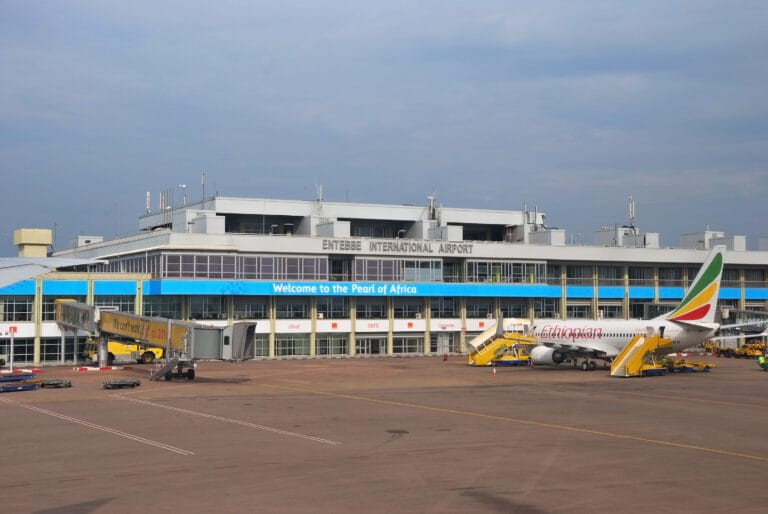East Africa is rapidly advancing its aviation infrastructure as part of a broader strategy to enhance trade, connectivity and economic resilience. Among the region’s most high-profile projects is Rwanda’s $2 billion Bugesera International Airport, a transformative development aimed at positioning the country as a key aviation and logistics hub. Situated near Kigali and developed in partnership with Qatar Airways, the airport forms a central pillar of Rwanda’s Vision 2050 and is expected to significantly cargo capacity. While its economic potential is vast, the project has drawn caution from the International Monetary Fund (IMF), which has advised prudent fiscal management due to rising public debt. Similarly, Uganda is undertaking a $552.9 million expansion of Entebbe International Airport to modernise cargo and passenger facilities. Backed by Chinese financing, the project is designed to enhance Uganda’s export capabilities and align with its industrialisation goals. Together, these developments underscore East Africa’s commitment to regional integration and global competitiveness through strategic infrastructure investment.
Bugesera International Airport, Rwanda
This is one of the most ambitious and transformative infrastructure projects underway in East Africa. Located approximately 40 km south of Kigali, Rwanda’s capital, the airport is being developed to address increasing air traffic demand and to position Rwanda as a regional aviation and logistics hub. With a total projected investment of $2 billion, the project is a key component of Rwanda’s Vision 2050, which aims to drive economic transformation through enhanced connectivity and infrastructure.
The project is being developed in partnership with Qatar Airways, which owns a 60% stake in the venture. This strategic collaboration not only brings in substantial foreign investment but also underlines Rwanda’s growing appeal as an investment destination. The involvement of Qatar Airways is expected to ensure international operational standards and boost Rwanda’s ties with the Middle East and beyond.
Bugesera International Airport will feature a modern, state-of-the-art design, and is planned in multiple phases. The first phase, scheduled for completion by 2026, includes the construction of a single runway, a passenger terminal and a dedicated cargo terminal with a capacity of 150,000 tonnes per year. The cargo terminal is especially significant for Rwanda’s growing export-oriented sectors, such as agriculture, horticulture and manufacturing, as it will offer direct access to international markets.
The second phase of development, projected to be completed by 2032, will further expand the airport’s capacity through the addition of a second runway, an expanded passenger terminal and enhanced cargo facilities.
Once operational, Bugesera International Airport is expected to significantly boost Rwanda’s trade volumes, tourism and foreign direct investment. It will also ease pressure on Kigali International Airport, which is currently operating near its design capacity. Overall, the project represents a critical step in enhancing Rwanda’s connectivity and economic competitiveness across the continent and globally.
However, The International Monetary Fund (IMF) has urged Rwanda to proceed cautiously with the project, warning that it could pose risks to the country’s fiscal stability amid growing public debt. This guidance was shared during ongoing consultations between the IMF and Rwandan authorities. The Fund emphasised the importance of prudent financial management and strategic planning to ensure that major infrastructure investments do not undermine Rwanda’s broader economic and fiscal sustainability goals.
Entebbe International Airport
The expansion of Entebbe International Airport is one of Uganda’s most critical infrastructure projects aimed at transforming the country’s aviation capacity and boosting its regional and international trade competitiveness. Located approximately 40 km southwest of the capital city, Kampala, Entebbe International Airport serves as Uganda’s primary gateway to the world. The airport’s expansion is being undertaken with a total investment of $552.9 million, financed through concessional loans from the Export-Import Bank of China.
A key component of this multi-phase development project is the construction of a new, modern cargo terminal designed to dramatically increase the airport’s freight-handling capabilities. Once completed, the new terminal will have the capacity to process up to 100,000 tonnes of cargo annually, a significant leap from the airport’s current capacity of approximately 6,000 to 10,000 tonnes. This ambitious enhancement underscores Uganda’s intent to position itself as a vital logistics and export hub within the East African region.
The expanded cargo terminal will be equipped with advanced technology and infrastructure, including temperature-controlled storage, secure warehousing, and automated cargo handling systems. These features are especially critical for Uganda’s key export sectors such as fresh produce, fish, coffee, flowers and pharmaceuticals, all of which require efficient and rapid transport to international markets. The upgraded facilities will also help reduce spoilage and enhance the shelf-life of perishable goods, giving Ugandan exporters a competitive edge in global trade.
In addition to the cargo terminal, the expansion includes the construction of a new passenger terminal, an upgrade of the existing runway, and improvements to airside and landside infrastructure. These developments are aimed at accommodating increasing passenger traffic and streamlining operations at the airport. However, the cargo-focused components are seen as the most strategically significant, given their direct impact on trade volumes, export earnings and job creation in associated sectors.
The expansion is being implemented in phases, with final completion anticipated by 2033. The phased approach ensures that airport operations continue uninterrupted during construction while allowing time to integrate new systems and facilities gradually. Upon full completion, Entebbe International Airport will not only meet the International Civil Aviation Organisation (ICAO) standards but also serve as a key node in the African Continental Free Trade Area (AfCFTA) logistics network.
By significantly upgrading its airfreight capabilities, Uganda is setting the stage for broader economic transformation. The new cargo terminal will provide the physical infrastructure necessary to support the country’s industrialisation agenda, attract foreign direct investment, and foster deeper integration into regional and global supply chains. Overall, the Entebbe International Airport expansion represents a forward-looking investment in Uganda’s future as a dynamic, trade-driven economy.



